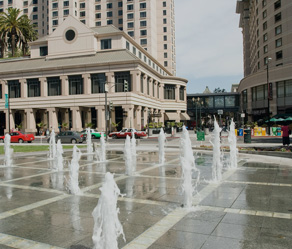Mohs Micrographic Surgery
Mohs Micrographic Surgery for Removal of Complicated Skin Cancer
About one in five Americans will develop skin cancer during their lifetime. Most skin cancers appear on the face which can result in disfiguration. The Mohs surgical technique is the most precise and effective way to treat skin cancer while preserving as much healthy tissue as possible. Due to the methodical manner in which tissue is removed and examined, Mohs surgery is recognized as the skin cancer treatment with the highest reported cure rate. For most skin cancers, the cure rate is 99%. It is the single, most effective technique for removing basal cell and squamous cell carcinomas, the two most common types of skin cancers.
What is Mohs surgery?
Mohs surgery differs from other skin cancer treatments in that it permits the immediate and complete microscopic examination of the removed cancerous tissue, so that all “roots” and extensions of the cancer can be eliminated.
The biopsy proven skin cancer site is treated with local anesthetic. The visible portion of the skin cancer is removed by scraping the cancer tissue with a sharp instrument called a curette. Then a narrow margin of visibly cancer-free skin is removed around the entire perimeter and deep aspect of the site. This tissue, which encompasses 100% of the surgical margin, is then inked with colored dyes for orientation, carefully mapped, and processed onto microscopic slides by a technician. Dr. Miller then examines the slides under the microscope to determine if any tumor cells are still present. If cancer cells remain, Dr. Miller can locate the area precisely on the map and remove only tissue known to harbor skin cancer in subsequent stages (often called layers). This process is repeated until the entire surgical margin is clear (free from skin cancer).
The removal and processing of each stage takes approximately one hour, though only about 10-15 minutes of this is for the surgical removal of tissues. The remaining time is required for the slide preparation and examination.
Most skin cancers will be cleared in 1 or 2 stages when Mohs surgery is performed by Dr. Miller. More extensive tumors can involve a higher number of stages and can take several hours to fully treat. You should expect to spend at least half a day in the clinic to complete Mohs surgery.
After the compete removal of the skin cancer by Mohs surgery, you will have an open surgical wound. This wound will be addressed with several options to achieve the best cosmetic and functional outcome. This may involve a linear closure with stitches, skin flaps or skin grafts, or the wound may be allowed to heal on its own, a process called spontaneous granulation or secondary intention. Dr. Miller is an expert in reconstructing surgical wounds in nearly all areas of the body.
When is Mohs surgery the best approach?
It is indicated for skin cancers in areas where preservation of the greatest amount of healthy tissue is important for function and/or cosmetic purposes, including the eyelids, nose, ears, fingers, toes and genitalia. It is also beneficial for recurrent skin cancers, skin cancers containing scar tissue, large skin cancers, skin cancers where the borders are not clearly defined, skin cancers that are aggressive and infiltrating, and skin cancers that show unusual growth patterns.
What are the potential disadvantages of Mohs surgery?
It is time consuming, because all the work is done by the surgeon and pathologist, while the patient waits. While it can take much of the day in some cases, the difference in time is important to the outcome. When Mohs is not used and the cancer is removed, the tissue is sent to a lab to assure that no cancer cells remain. Meanwhile, the wound is sutured and the patient is sent home. If the lab report shows positive margins are involved, the wound would need to be reopened, and surgery would be repeated.
Dr. Miller has successfully performed over 2,000 Mohs cases with outstanding outcomes. He has received intense training with the American Society of Mohs Surgery (ASMS) and is an active member of the American Society for Mohs Surgery. He strives for excellence to ensure each case receives special attention for a flawless outcome.



